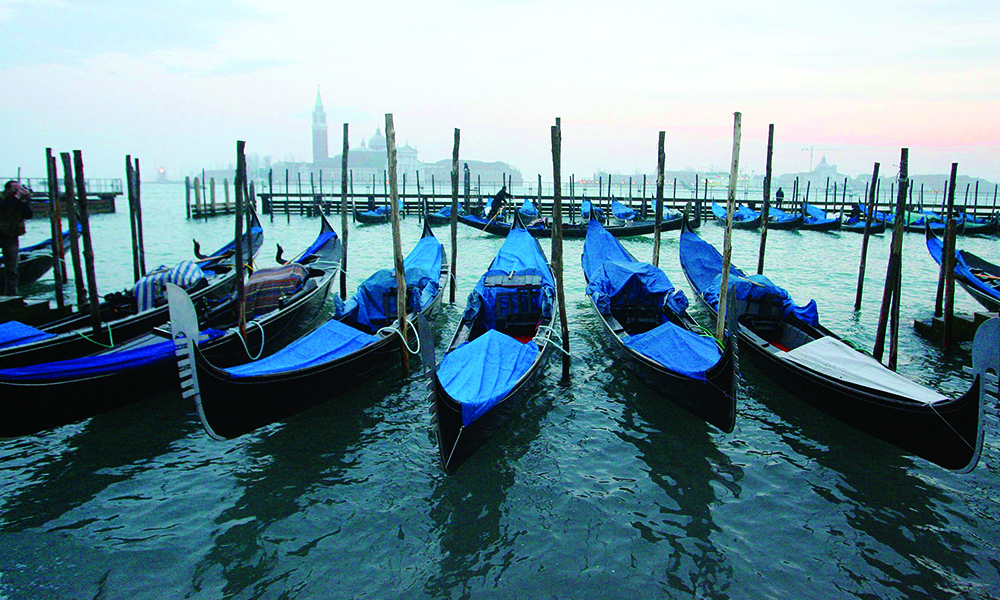By Ang Xue Er,Epoch Time Contributor
Our next stop in our trip across Italy was Venice.
“It’s the kind of place that’s spectacular in every shade of light.”—Olimpio Fantuz, photographer
A Day in Venice
Our motive for visiting Venice was simply to see it before it sinks. Everything there was extremely expensive, and a gondola boat ride at €80 (S$121) per person was definitely a no-no for us students. Other than that, the streets of Venice were full of push carts selling masks and the usual selfie-stick sellers.
Moving on to the most popular square in Venice—the Saint Mark’s Square. It is surrounded on three sides by the Procuratie Vecchie and Procuratie Nuove, built in the 12th and 16th centuries respectively.
These connected buildings once housed the apartments and offices of the procurators of Venice, government officials who oversaw the administration of the Venetian Republic. Today, the Procuratie Nuove has been transformed into a museum—Museo Correr, which offers tourists an interesting insight into the art and history of Venice. Famous cafés, such as the Gran Caffè Quadri and Caffè Lavena, spill out from the Procuraties’ arcade ground floors.
On that particular day, we saw a masquerade event at St Mark’s Square where people showcased exuberant costumes and ornate masks. I found their costumes much more appealing than the Japanese style of cosplay. Given that I was there on February 9, 2015, the event was most probably celebrating the upcoming Valentine’s Day—a fitting occasion for the city that is known as “the land of romance”! What attracted me the most, however, were the adorable kids dressed up in cute carnival outfits.
Next, we entered Saint Mark’s Basilica—a cathedral church known for its Italo-Byzantine architecture. Take the time to admire the majestic grandeur of its interior and façade, it is truly impressive!
In the distance, one can see the Cathedral of Santa Maria della Salute on the Grand Canal. Unfortunately, we did not have a chance to visit this remarkable domed cathedral as it was undergoing restoration. In 1630, Venice experienced an unusually devastating outbreak of the plague. The Cathedral of Santa Maria della Salute was built as a pledged offering for the city’s liberation from the epidemic.

Venice is also known as the “City of Canals” or the “City of Bridges”. Did you know that Venice consists of 118 little islands intersected by 150 canals and joined by 400 bridges? The five most famous bridges of Venice are the Bridge of Sighs, Rialto Bridge, Academy Bridge, Scalzi Bridge and Calatrava Bridge. The next time you visit Venice, do seek out these bridges!
Rome
Rome wasn’t built in a day, and that is a literal truth. Witnessing the massive ruins scattered around Rome gave me an inkling of what the glorious Roman Empire must have looked like in its heyday.
Archaeological Remains of the Roman Empire
The magnificent Colosseum was our first stop in Rome. Also called the Flavian Amphitheatre, this elliptical monument was constructed by Emperor Vespasian in 72 AD, and could hold up to 50,000 spectators. During the Roman Empire, the Colosseum was a venue for gladiatorial contests, fights between exotic animals, public executions, and re-enactments of famous battles.
Less than 5 minutes walk from the Colosseum lies one of the seven Hills of Rome and the most ancient part of the city—Palatine Hill. Adjacent to the hill is the Forum Romanum—a rectangular forum surrounded by the ruins of several iconic ancient government buildings.
Monument of Vittorio Emanuele II
Built in the early 20th century, the Monument of Vittorio Emanuele II is one of Rome’s most notable monuments. A neo-classical style building with a magnificent flight of stairs and walkway, it is a controversial memorial built in honour of the first king of unified Italy—Victor Emmanuel. Its grandeur and over-the-top pomp has earned it the flattering nicknames of “giant type-writer” and “wedding-cake”.
Spanish Steps
The Spanish Steps or “Scalina Spagna” is one of Rome’s most beautiful places. The 138 steps, which are laid out in a symphony of curves, straight flights, vistas and terraces, form a wide gathering place for the populace. At the top of the steps stands the Trinita dei Monti church, and at the bottom is the large Piazza di Spagna. The Piazza di Spagna is also a major shopping destination in Rome.
Trevi Fountain
Unfortunately, the world famous Baroque-style Trevi Fountain is under restoration, and is expected to remain closed until October 2015! To round off the day, we had some incredible honey and Valrhona chocolate gelato at San Crispino, which is located near the fountain. The most expensive chocolate is made from 70% Valrhona cocoa. This was my first time eating Valrhona chocolate and it tasted too good to be true. It was hands-down the best honey and chocolate ice cream I had ever had!
This is a must-try if you are in Rome. If you haven’t, you haven’t been to Italy—famous for gelato!
















